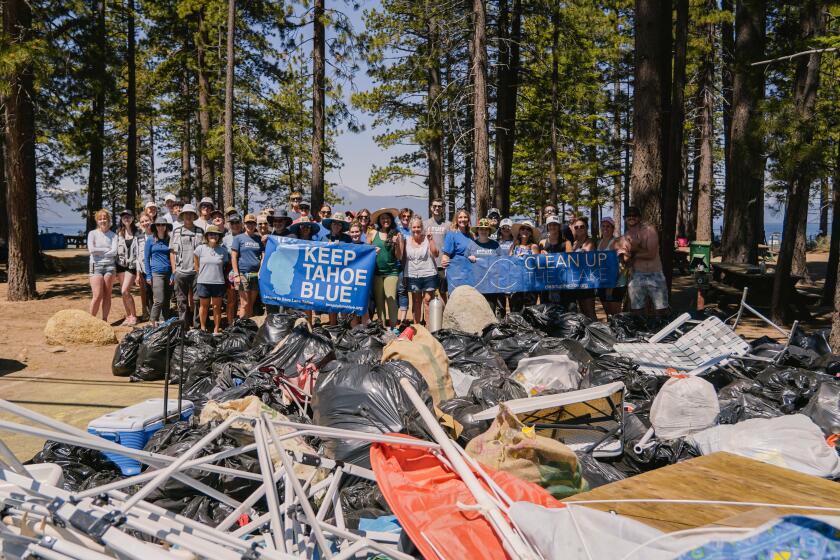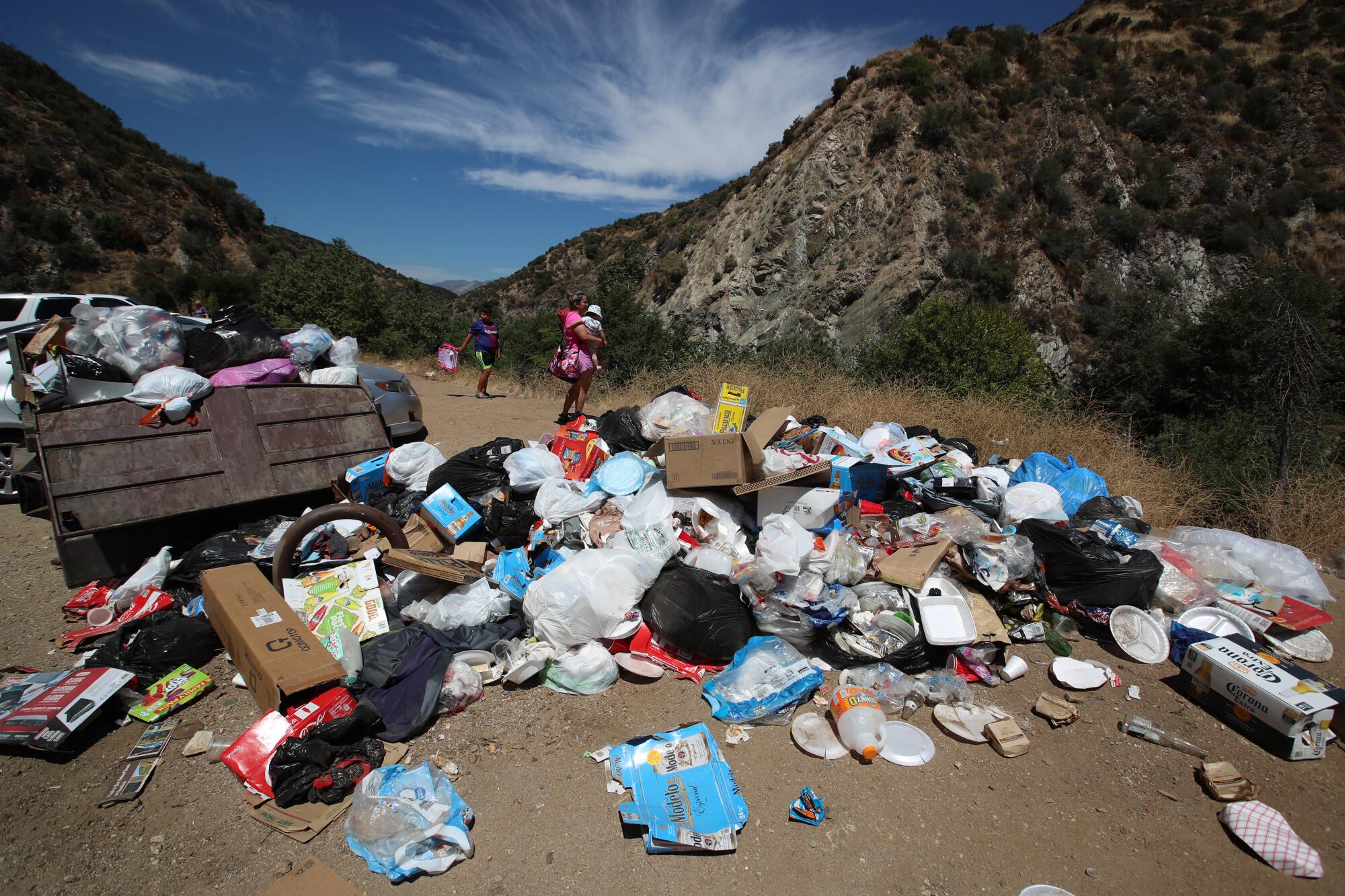
- Share via
Moises Rivera and Marisol Medina had a clear vision in mind when they began their summer excursion in the mountains above blistering Los Angeles recently — and that vision definitely included a cooling dip in the East Fork of the San Gabriel River.
Urged on by images like-minded urbanites have posted to YouTube, Instagram and TikTok, the couple looked forward to floating in a picturesque swimming hole where oak and sycamore trees threw shadows over clear, serene waters.
Yet even before they found a place to park, Rivera, 32, and Medina, 27, were greeted by harsh, unfiltered reality. Chaotic crowds swarmed a 2½-mile stretch of river whose rocky banks were marred by graffiti. Roadsides were heaped with all manner of garbage: rotting food, barbecue grills, bottles, ice chests, soiled diapers and float toys.
“It’s the first thing we noticed,” Medina said. “It’s disturbing.”
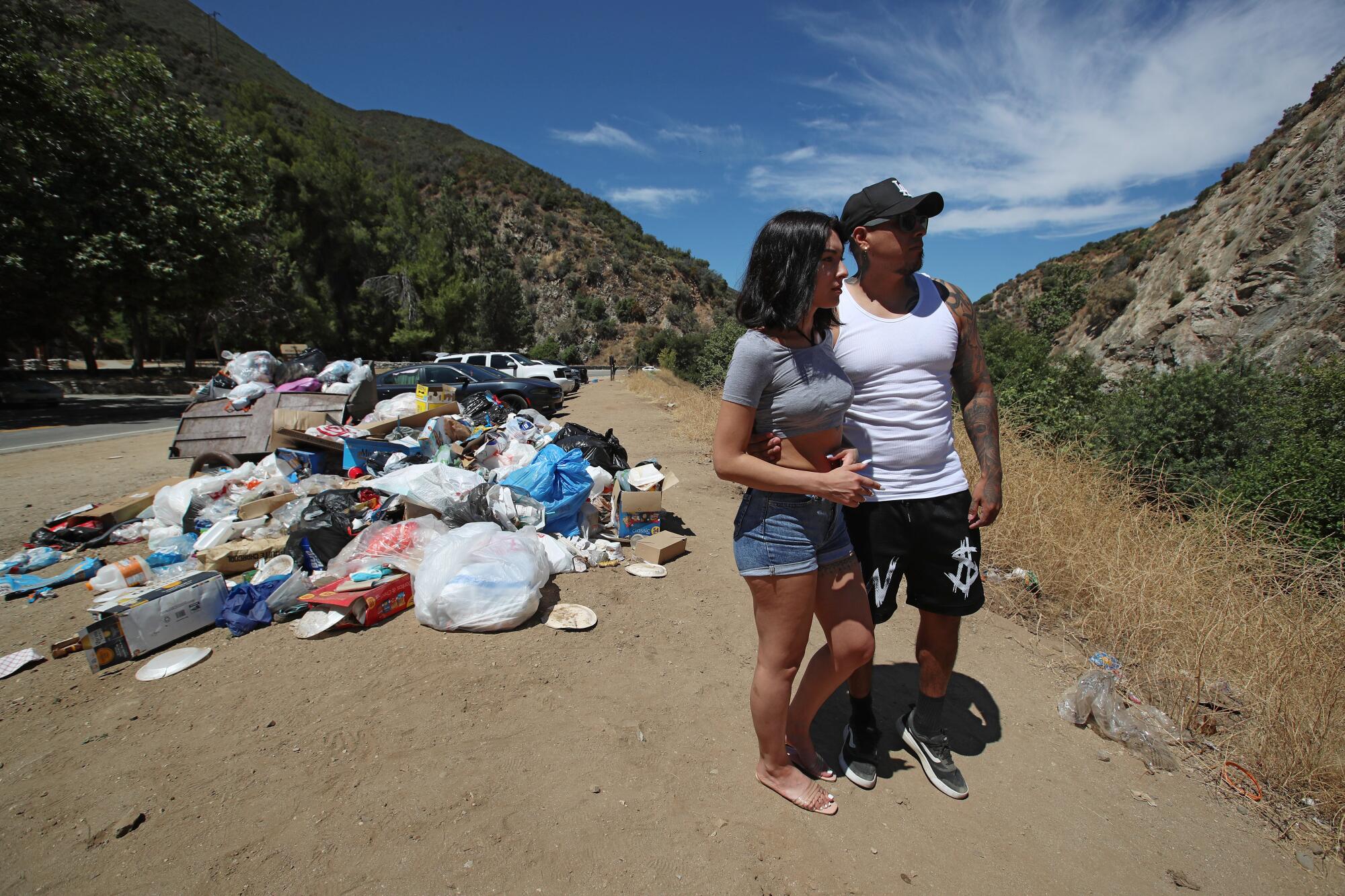
Nearby, a visitor unloaded a carload of excited children and shrugged her shoulders at the reeking piles of trash. “Not much you can do about it,” she said.
Nowhere else in San Gabriel Mountains National Monument is a crisis of natural resource management more beautifully framed than at the bottom of a canyon that looks like some High Sierra gorge — only covered with trash.
Nine years after President Obama upgraded the region to monument status — an act intended to foster a cleaner and safer wilderness — park officials and volunteers have been struggling to cope with the consequences of surging visitation, particularly in summertime.
It’s a problem that has not only blighted the landscape, but also raised worries over contamination of one of the region’s largest watersheds.
Just ask Tom Walsh, who for 30 years has helped lead volunteer efforts to clean up areas of the monument and restore habitat for native wildlife including bears, mountain lions and federally endangered Santa Ana suckers.
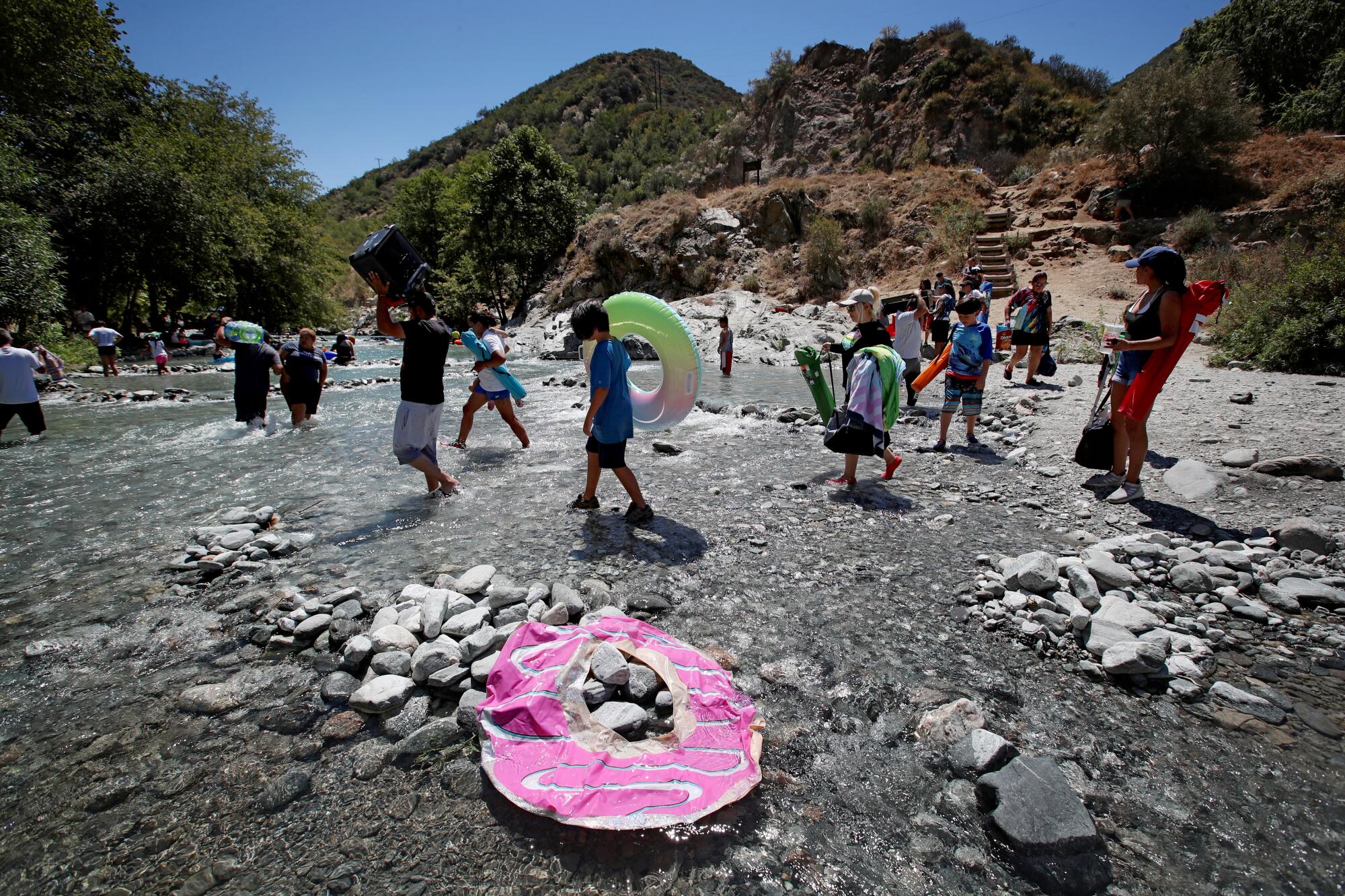

“The East Fork is a filthy mess, and things have only gotten worse since the monument was designated,” said the 80-year-old. “That’s probably why we’ve been losing volunteers. There’s no end to the trash.”
Their quarry includes hypodermic needles, discards from homeless encampments, human waste in thickets near the Oak Picnic area nicknamed “the East Fork toilet,” and occasional headless chickens and slaughtered lambs believed to be remnants of spiritual rituals.
Cynthiann Gamboa, 37, who lives on a ranch by the river, described the East Fork as “a place where heartbreak turns into anger.”
There are nearly 50 billion pieces of litter along U.S. roadways and waterways. L.A. group Pick Up While You Hike Up shares tips for lessening the litter load.
“Families flock to the river to escape the heat, but there are no rules, no limits and not a ranger in sight once they get there,” she said. “They park where signs say ‘No Parking.’ They build fires where signs say ‘No Fires.’ They walk through trash to get down to the river, then leave more trash behind before heading home.”
The 346,000-acre monument is a beloved destination for those who wish to escape the heat and grime of the bustling Los Angeles Basin and sits within an hour’s drive of some 18 million people. The monument was formed by redesignating about half of Angeles National Forest. However, its creation came with no new government money, leaving agencies, nonprofits and municipalities to seek funding from public and private donations and from adjusting the budget of the U.S. Forest Service, which manages the monument.
“I wish I could flip a switch and make everyone behave,” said Angeles National Forest Supervisor Roman Torres. “When you get 4.5 million visitors a year, it’s difficult, and you have trash challenges.”
Angeles National Forest is working on solutions, he said, including trying to hire 19 forestry technicians who would focus on tasks such as trash removal and reviewing contract obligations of companies responsible for emptying dumpsters within the national monument.
“Visitors could help,” he added, “by not throwing trash down on the ground.”
East Fork Road and California 39, the winding mountain highway that provides the only access to Crystal Lake and other recreational areas north of the East Fork, are patrolled by Forest Service rangers, the California Highway Patrol, the Los Angeles County Sheriff’s Department, firefighters and Caltrans crews.
Volunteers joined forces to clean up the trash that was particularly heavily on Zephyr Shoals, one of the least-regulated areas along the shore.
On summer weekends, authorities are swamped with reports of rowdy parties, overturned vehicles, lost hikers, burglaries, dangerous automotive stunts along California 39, illegal campfires and traffic tie-ups caused by haphazard parking.
Incidents in the monument can have effects far beyond the wilderness, however. In 2012, a vehicle driving through dry brush just off East Fork Road sparked a fire that blackened more than 4,000 acres of the San Gabriel watershed, which provides Los Angeles County with 33% of its water.
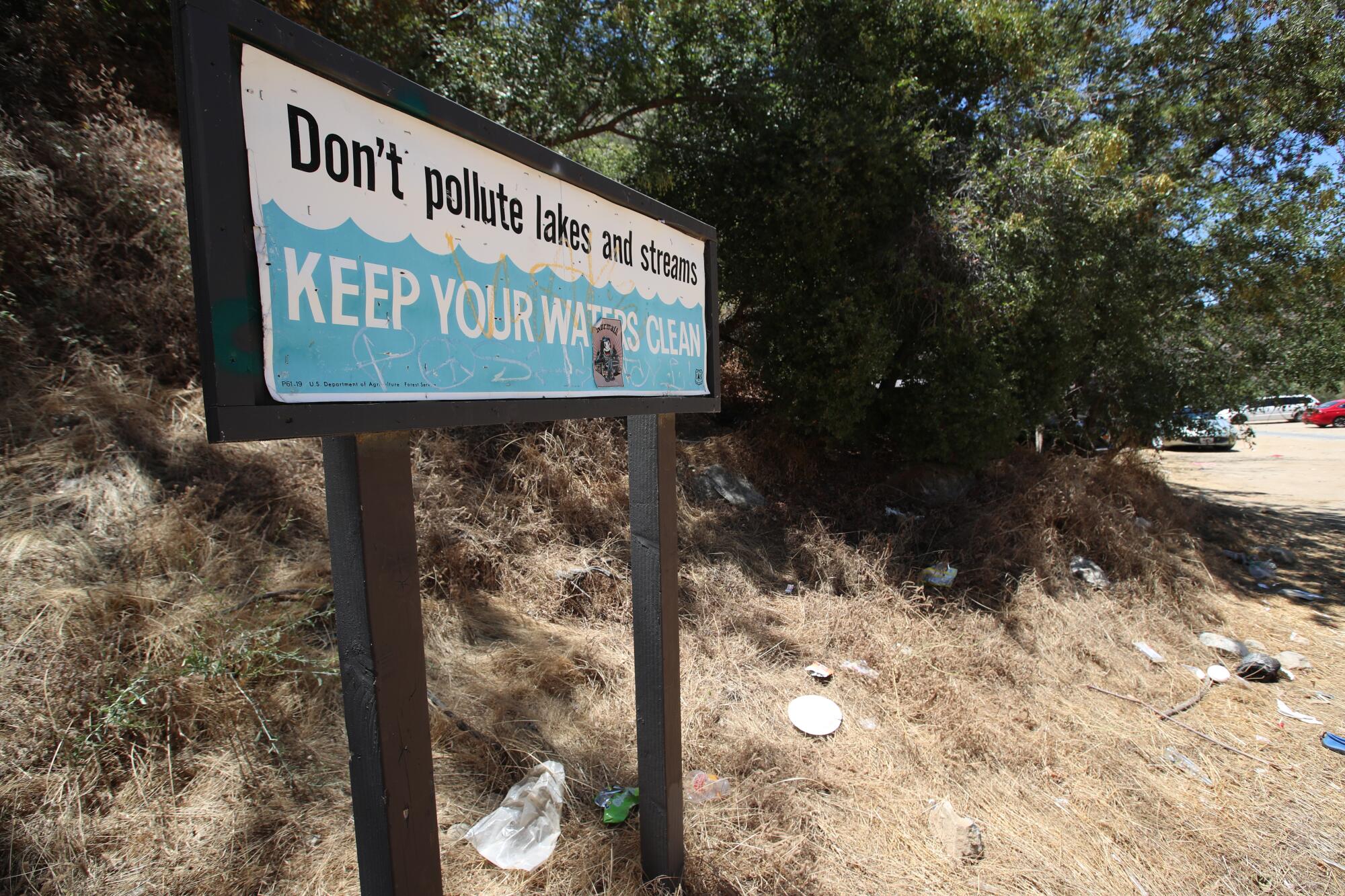
Last year, a car that veered off East Fork Road dripped oil and gasoline into riverbed sands marked with the paw prints of squirrels, foxes and coyotes for five months before it was hauled away by the CHP, officials said.
“We’re very concerned about an obvious lack of law enforcement and maintenance at the monument,” said Mark Stanley, executive officer of the state San Gabriel and Lower Los Angeles Rivers and Mountains Conservancy. “We recently visited the East Fork area and were shocked.”
Refuse has been a health concern in the area since 2000, when the California Regional Water Quality Control Board ordered the Forest Service to reduce trash levels in the East Fork to zero within three years.
In response, rangers and volunteers were stationed at popular picnic sites to direct visitors to roadside trash bins and provide them with information about environmental issues and litter laws. They also posted “No Littering” signs printed in English and Spanish.
That strategy was abandoned a few years later because of budget cuts.
Now, there is renewed talk of devising strategies to limit visitors and instruct them on how to be better stewards of the environment.
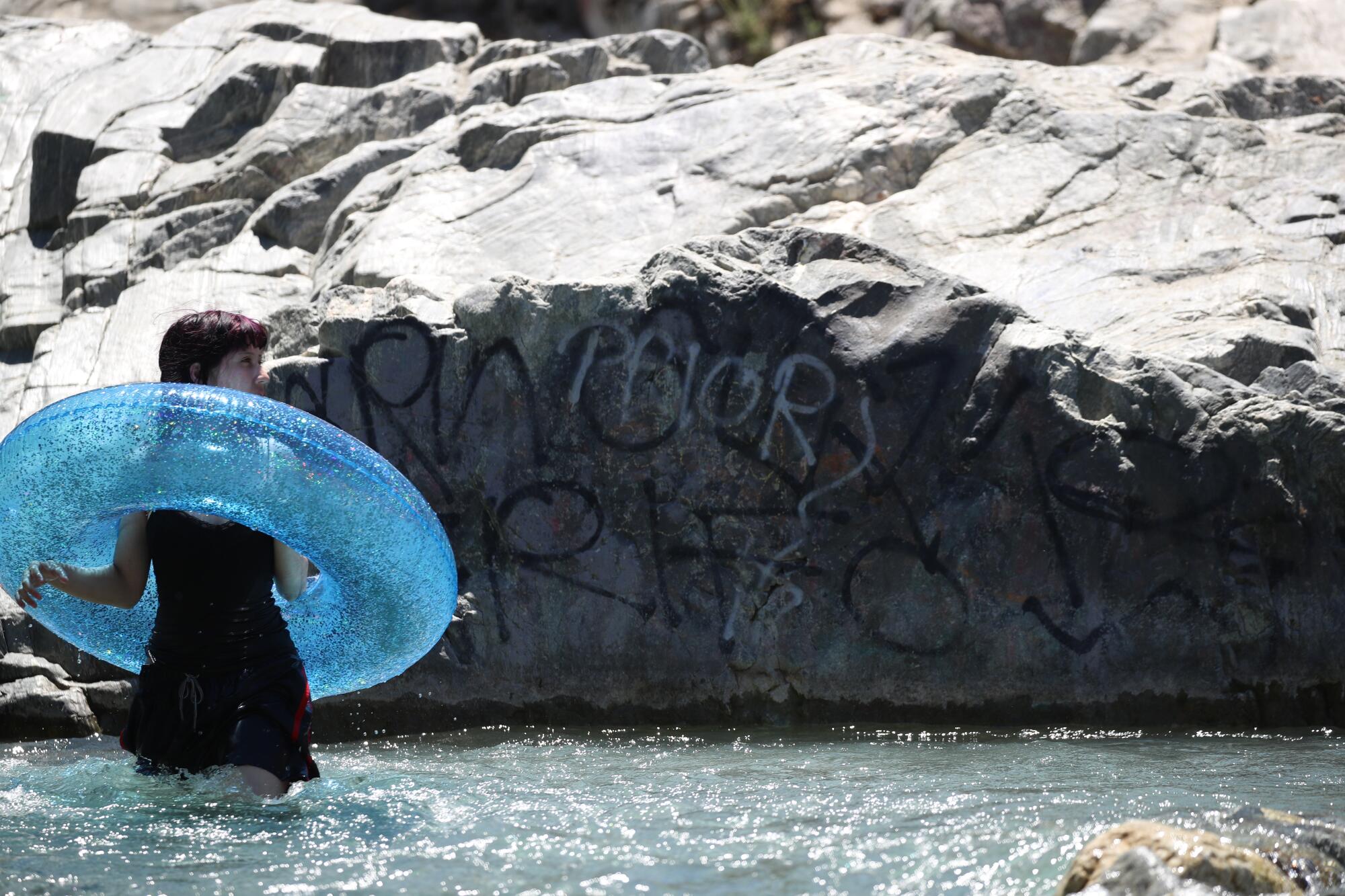
The flood of ill-behaved tourists isn’t the only reason for the area’s problems. Implementation of a management plan for the East Fork, finalized in 2019, was stalled by COVID-19 and a lawsuit.
“We desperately need an East Fork stewardship plan that is adequately funded and staffed,” said Isaac Brown, a senior scientist at Stillwater Sciences, a consulting firm specializing in restoring rivers and floodplains.
The Forest Service has long complained of high turnover rates in management, chronic budget cuts, and being unable to pay wages high enough to attract sufficient numbers of “forestry technicians” to remove all the trash that accumulates each day along the East Fork. Pay for such positions in Angeles National Forest start at about $43,600 a year, officials said.
Most of the Forest Service’s budget is set aside for wildfire protection, as well as repairing campgrounds, roads and infrastructure damaged by torrential rains earlier this year, officials said.
Some critics see a connection between chronic overcrowding and the promotional efforts of large nonprofits that seek to increase access to the monument. Critics say the organizations have failed to take into account the toll on wildlife and habitat.

Belen Bernal, executive director of Nature for All, a coalition of environmental and community groups that has long campaigned for more parks and safe outdoor opportunities in one of the largest metropolitan areas in the United States, agrees — up to a point.
“It’s true that we are looking at increased access,” Bernal said. “But during the summer months it’s a whole different ball game. This is a management issue.
“We’re not entirely happy about the situation in the monument. Just a year away from its 10th anniversary, it still doesn’t have enough restrooms, dumpsters or even a visitor center.”
The Ballona Creek Trash Interceptor 007 collected nearly 155,000 pounds of trash in the first rainy season of its two-year pilot project.
In the meantime, the East Fork consistently earns an “A-plus” water quality rating from the nonprofit Heal the Bay in an online report card on the health of Southern California’s waterways — despite trash and alterations of natural flows due to illegal man-made dams built out of rocks, carpet strips and limbs ripped off nearby trees for the creation of swimming holes.
Those ratings, however, are based on water samples typically collected in the morning, before the onslaught of large crowds hoping to escape the heat, said Karin Wisenbaker, a senior scientist at Aquatic Bioassay and Consulting Laboratories in Ventura, which conducts the analytical work.
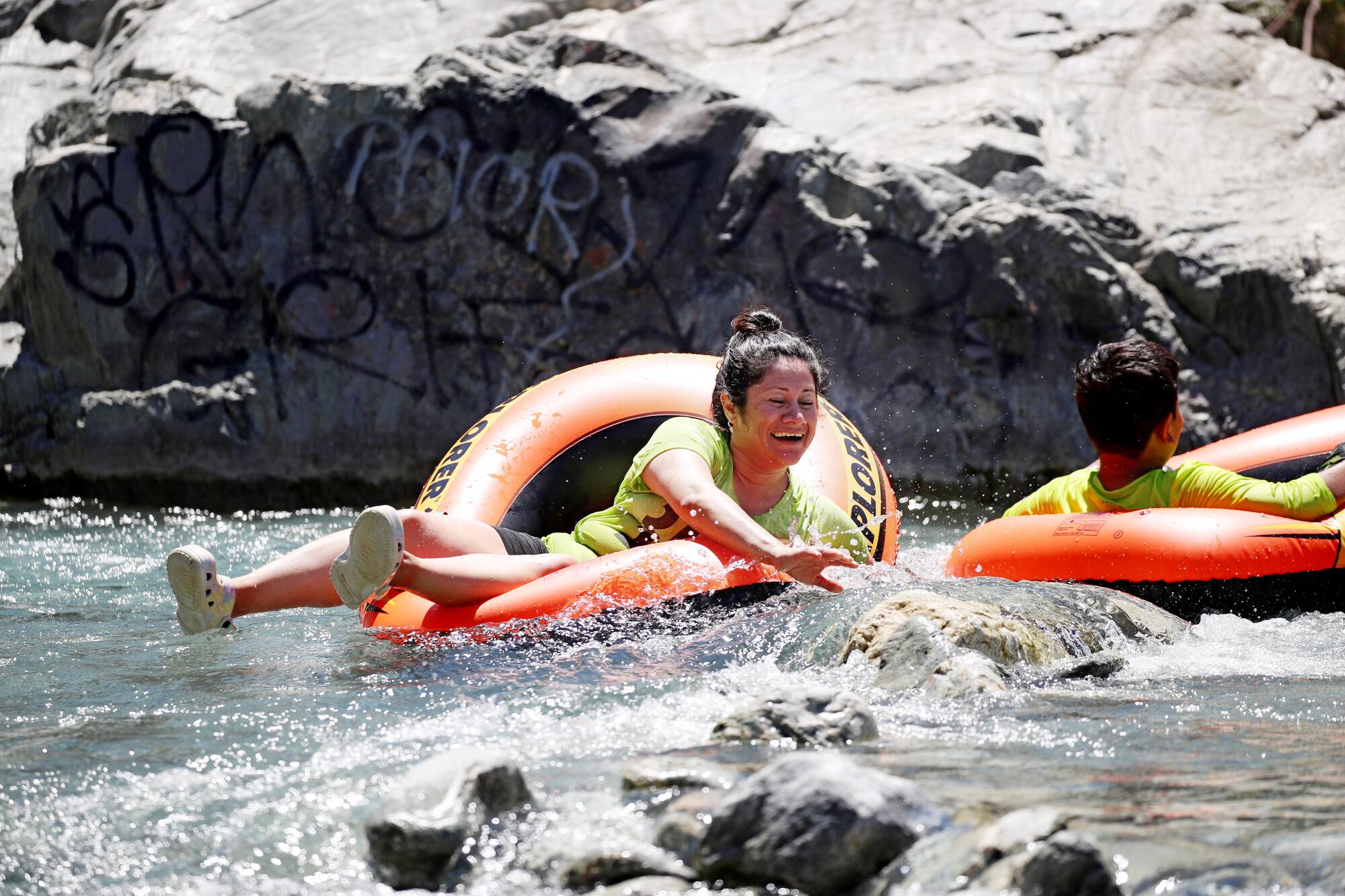
“We don’t necessarily test at popular swimming holes,” she said, “and we have found potentially harmful higher levels of E. coli bacterial concentrations in them around the summer holiday weekends.”
Overall, she said, “we have seen horrible amounts of garbage in the river, and we are deeply concerned, even disgusted, by that.”
For Kevin Nunez and his son Nathan, Native Americans who have long family history locked within the rugged and geologically active mountains, volunteering to help remove the flotsam and jetsam of tourists is a solemn duty.
Their cultural connections and reputations for eloquence have also made them essential consultants in ongoing projects aimed at recovering aquatic species, restoring habitat and avoiding disturbance of carefully guarded touchstones of the past: burial grounds, remnants of ancient villages and rock art.
“The critical needs are obvious,” Nathan Nunez, 23, said. “They include controlled access, effective and consistent trash removal services, strictly monitored designated parking areas, more law enforcement officers and meaningful conservation programs.”
Even with those improvements, however, Kevin Nunez believes there is a limit.
“I cringe when I hear large social organizations promoting programs designed to increase visits at the monument,” the 53-year-old said. “It’s already suffering from more people than it can handle.”

